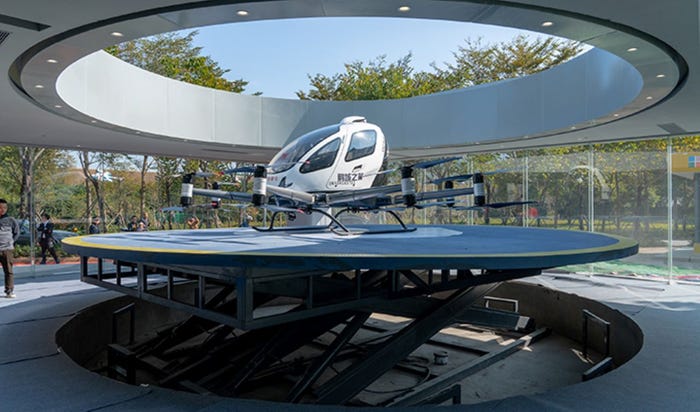This Is Smart Cockpit Calling Ground Control, Inside Airbus's Conversational AIThis Is Smart Cockpit Calling Ground Control, Inside Airbus's Conversational AI
In this session from Informa Tech’s AI Summit, Airbus’s Walid Yassine Medjati discusses chatbots in pilot cabins and other possibilities for conversational AI in the digital transformation.
September 24, 2021

At the virtual track of the AI Summit, part of the jam-packed London Tech Week, an Airbus data scientist outlined conversational AI’s enabling role in the digital transformation.
Airbus has managed to train conversational AI using domain classification techniques, data content and interaction models. Once trained, the software has underpinned efforts to create dashboarding & visualization chatbots, chatbots for onboarding application users and even a cockpit operations chatbot, according to Airbus’s Walid Yassine Medjati.
In a landscape where pilot stress levels are rising, Yassine Medjati cited hard examples where conversational AI was set to simplify aircraft operations. For example, conversational AI could help the pilot relax ahead of landing, by automatically contacting airports to gauge in-bound capacity.
Yassine Medjati explained: “We’re also looking at how to predict whether the airport will need to make a hard landing with more force than normal. This is more based on machine learning than chatbots – to understand what is going on [on the ground].”
Behind the scenes Airbus also wants to incorporate conversational AI in future factory designs, to help field technical questions down on the work floor. It also has a chatbot called EcoDesignBot in the works to brief operational managers on actions that support the UN’s sustainable development goals.
Because it repurposes machine learning for the natural interaction framework of humans, conversational AI opens up endless possibilities for the enterprise. It expands the scope for computer interfaces beyond rigid rules-based actions, fostering a rich framework of spoken words or text scripts that improve user experience.
In the consumer market, deep learning algorithms have enabled conversational AI to blossom into all-purpose smart assistants. According to a recent survey cited by Yassine Medjati, some 64% of the general public currently have access to conversational AI technology. However, enterprise adoption has been slower, with only half of enterprise decision makers currently factoring voice-activated technology into their operational strategy, according to Speechmatics’ 2020 trends prediction report.
Yassine Medjati said: “Great chatbots can maintain the back-and-forth conversation in a natural way, within the scope of the design, but [will also make the user] feel they’ve been helped without speaking to a human.”
When choosing an AI system, an enterprise should exercise discretion to target frequently occurring employee or customer issues and then decide whether automated dialogue is suitable. This is most likely for interactions that take place in a formulaic template.
Yassine Medjati said: “When selecting the use-case, we need to focus on how to improve customer services, more than only reducing cost over time. Both are important, but by focusing on improving customer service in the initial use case these will be future proof while reducing overall cost in the long term.”
Matching the right skills to conversational AI will help businesses get ahead of the pack, Yassine Medjati argued. For instance, expertise in instant messaging apps such as Slack or Whatsapp paves the way for adoption of dialogue-based systems, given that these platforms are ubiquitous more so than even social media, Yassine Medjati added.
– This article was amended on request by Walid Yassine Medjati to correct the description of his role at Airbus, and include his preferred naming convention.
About the Author
You May Also Like






